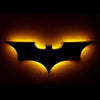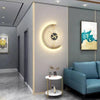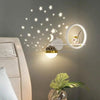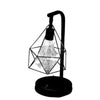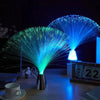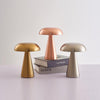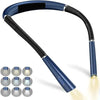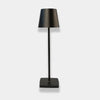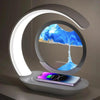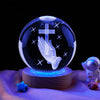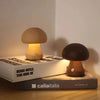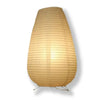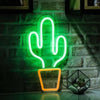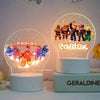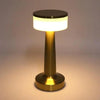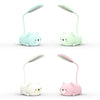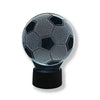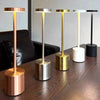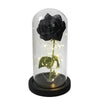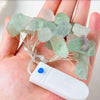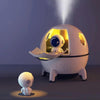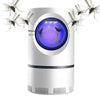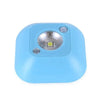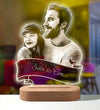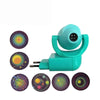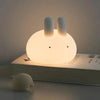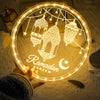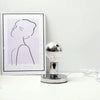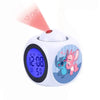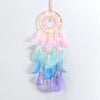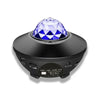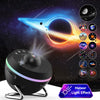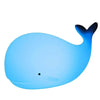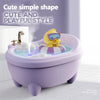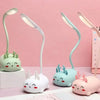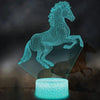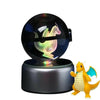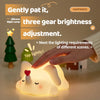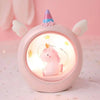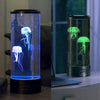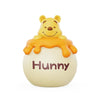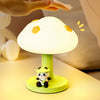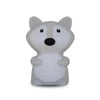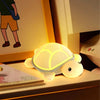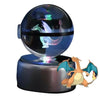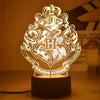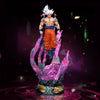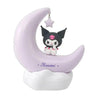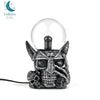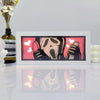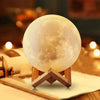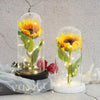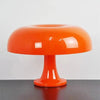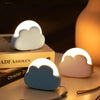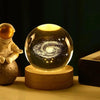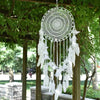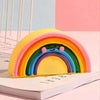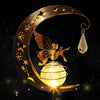The Benefits of the Himalayan salt lamp is beneficial for your health and well-being

Why do you need it?
What are Himalayan Salt Lamp Benefits, and Do They Really Have Health Benefits?
It's become a feel-good cliché for a reason: the Himalayan salt lamp is a natural, beautiful, and functional addition to home or office decor, and even offers health benefits. It's no secret that I love these popular decorations - my house is full of them. I mean, I love anything pink, and these magical pieces of nature are lovely to look at. But it’s exciting that they can potentially make us feel better too!
Himalayan salt lamps are formed from pink salt crystals, and are mined from the edge of the Himalayan mountains in Pakistan. They are usually carved in the center to allow space for a bulb to be used as a source of light and decoration. These magnificent rocks vary in color from light pink to dark pink with an orange undertone, depending on their mineral concentration.
Himalayan salt lamps can add an element of beauty and nature to any space. But aside from being beautiful, these rocks also offer some powerful proven health benefits ! And by proven, I mean actually backed by science. There are a few popular claims that have not been substantiated, but many that surprisingly have! So let’s dive into it.
Here's the first thing to know:

Himalayan salt lamps emit negative ions into the air . Salt is pretty cool - it's a hygroscopic substance, which means it has a net positive ionic charge. In other words, due to its specific electrical charge, it attracts water molecules from the surrounding environment and leaves behind more negative ions (compared to positive ions) in the air. Wtf is it just an ion? Well, technically it's an atom with a net electric charge due to the loss or gain of one or more electrons.
Sorry to play science class with you - basically just know that air is made up of very small particles that we call ions that have a charge, either positive or negative. The energy is VERY real. And the condition of the air can create an effect when ions in the air interact with atoms in your body.
The main debate is over how efficiently Himalayan salt rocks emit negative ions. Negative ions are most commonly emitted by flowing water, such as waterfalls and oceans. A little movement tends to help. But Himalayan salt lamps also release negative ions into the air – we're just not sure how much. And even if it's a small amount, the more negative ions you have in your home, the better! I mean it really can't hurt.
Additionally, I have a theory that placing your rock near a fan or near your air conditioning outlet can help circulate some of these ions.
But we probably can't say that Himalayan salt lamps "purify" the air . Read any major wellness publication and you'll see that Himalayan salt lamps are often said to be effective air purifiers.
The idea is that pollutants/toxins hanging around with water molecules in the air are attracted to the salt rock like a microscopic vacuum cleaner, where they stick. Voila, cleaner air! This might or might not be true - unfortunately, there have been no studies done on this point to prove or disprove the benefits of clean air. So, it's all theoretical at the moment.
Although it hasn't really been studied, salt rock can't harm air quality, and at best, it helps! Additionally, there IS an exciting benefit to Himalayan salt lamps and their negative ions that has actually been backed by science:
Negative ions can help relieve depression . As someone who has lived with depression for much of my life, I would do almost anything to boost my mood naturally. And all you have to do is put a cute salt rock lamp in your room? I'm in !
Although it seems paradoxical, negative ions make us feel good, while positive ions in the air make us feel bad. This has been proven by science - check out this study from the US National Library of Medicine which concluded that "meta-analysis results showed that negative ionization, overall, was significantly associated with lower depression scores.” They point out that the ions did not help with anxiety, sleep, mood or relaxation, but they showed marked results for depression.
I don't know about you, but this kind of thing makes me so excited. Nature’s medicine in action!
A great way to get a big dose of negative ions to fight depression is to go to a large body of running water. The ocean is ideal - I've found being near it to be immensely healing (there's a reason I chose to live in San Diego after living on Oahu), as well as the waterfalls. But if you're like most people and can't get in the water daily, it might just help to bring a little of the goodness of negative ions into your home with a Himalayan salt lamp .
Himalayan salt rock lamps have been proven effective in treating seasonal depression. And in a 2010 study, animals exposed to a salt lamp for 14 weeks showed improved tryptophan and serotonin production, which resulted in an antidepressant effect. (The chemicals tryptophan and serotonin help regulate mood in the body.)
The negative ions from salt rocks could improve your mood, increase your energy, and improve stress relief, naturally. And you know that anything that helps the health of your mind also improves the health of your body. Win-win.
Himalayan salt rock lamps can also reduce symptoms of allergies and asthma! In addition to emitting negative ions, salt is known to be helpful for those with allergies, asthma, and chronic obstructive pulmonary disease (COPD). And obviously, since we're in COVID times, anything that can potentially help you breathe is a good thing in my book!
A National Library of Medicine study examined 124 patients with various respiratory illnesses and found that an hour spent in a room transformed into an indoor natural salt cave helped relieve most of their symptoms. Salt rooms have also shown some beneficial effects in children with mild asthma!
For what ? Breathing in tiny salt particles helps clear your airways and break down mucus. You can actually use a Himalayan salt inhaler to help relieve respiratory symptoms, which is cute and fascinating. You've probably also heard of a Neti pot, which literally flushes your nasal passages with salt water.
Although these studies were carried out in a large salt room, it is clear that there are benefits to having salt in the air, even if on a smaller scale. I grew up in the arid desert of Albuquerque, New Mexico, and lived for a few years on the humid, salty island of Oahu. I've struggled with seasonal allergies for a long time (I've shared my favorite tools to help here), and I can attest that I breathed my best on Oahu. The salty air really helps.
While a single Himalayan salt rock lamp might not be enough to totally transform your airways, it's a good way to help.
My favorite benefit is that they help you relax so you can sleep better. Himalayan salt rock lamps , when lit, emit a calming pink glow that is truly relaxing, and the perfect shade of light to help signal your brain when it's time to relax.
You've probably heard that blue light can disrupt your circadian rhythm and trick your brain into thinking it's daytime and you need to be more awake, since it's the same wavelength as sunlight. sun. (psst...I rounded up my favorite blue light blocking glasses here)
Well, red light is on the other side of the spectrum and helps your brain settle into the night and slow down for a good night's sleep. I use these amazing Himalayan salt rock night lights; They're the perfect size to hang around your bedroom while you get ready for bed to help set the tone.
Plus, Himalayan salt rock lamps are simply relaxing. They create a more balanced and mindful space with their attractive, organic appearance. They are grounded in the earth, it is an element of the Earth that you bring into your home, apartment or office, and being in nature is essential to finding peace.
An important tip that you won't hear often but is crucial: you need to turn on the light often! I rarely see this mentioned in articles about Himalayan salt rock lamps , but it's so important: the role of the bulb is not just to make the rock a pretty light source. It is important to turn the light on frequently because the bulb inside the lamp heats the rock, which helps activate the ionization process. If you don't heat it, it's not bad, but it doesn't offer the same potential benefits.
The brighter you can turn it on, the better chance it has of interacting with the air to produce these negative ions for all the mental and physical health benefits.
There are more benefits that Himalayan salt rock lamps are claimed to offer, from improving skin quality to reducing static electricity in the air. And all of this may be true, but make sure you turn on your light to help it! If your rock has a hole but didn't come with a bulb, you can get the right type of bulb here.
Which Himalayan salt rock lamps to buy:
Here are some of my favorites!
- Large 9" lamp
- Small 6" lamp
- Rose shaped lamp
- Modern rectangular lamp
- Sphere-shaped lamp
- Diamond Shaped Tea Light Holder
- Salt lamp bowl with crystal pieces
- Night lights
- The verdict is clear - salt rock lamps are worth the purchase!
So don't hesitate to embrace your love of Himalayan salt rocks, and decorate wildly with them. Just because there haven't been a ton of scientific studies on the benefits of Himalayan salt rock lamps doesn't mean you won't feel positive effects - the work that has been done is clearly pro-salt.
A few final notes: make sure you buy an authentic Himalayan salt lamp. There are lamps that look like rocks but are not actually real. Real Himalayan salt comes mainly from the Khewra salt mine in Pakistan.
Also – Too much salt can be toxic to many types of animals, like cats and dogs, so keep your lamp out of reach if you find your pet likes to lick it! My daughter Peach, pictured here, thankfully has no interest in them except to sit next to them and absorb the negative ions. Mmm, salty...

